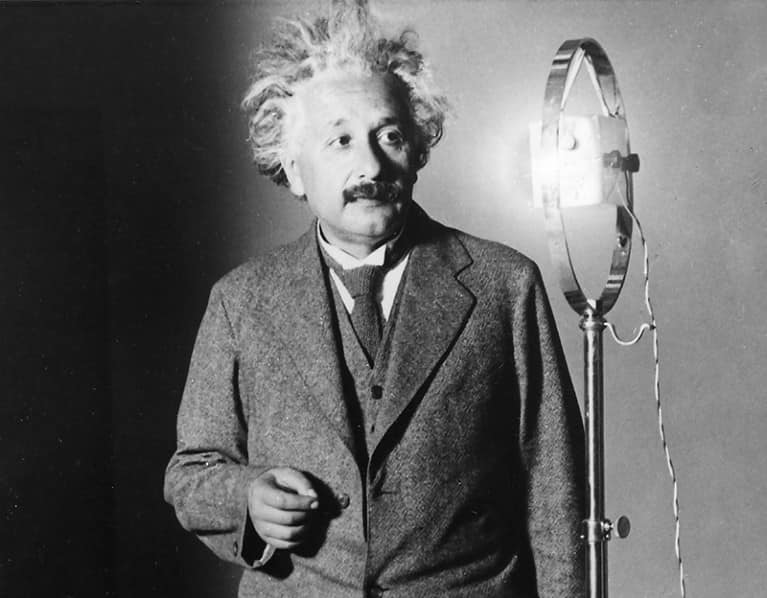Blog
Björk Guðmundsdóttir OTF (/bjɜːrk/ BYURK, Icelandic: [pjœr̥k ˈkvʏðmʏntsˌtouhtɪr̥]; born 21 November 1965) is an Icelandic singer, songwriter, composer, record producer, and actress. Noted for her distinct voice, three-octave vocal range, and sometimes eccentric public persona, she has developed an eclectic musical style over a career spanning four decades, drawing on electronica, pop, dance, trip hop, jazz, and avant-garde music. Regarded as the “Queen of Experimental Pop,” Björk is one of the most influential pioneers in electronic and experimental music.
Born and raised in Reykjavík, Björk began her music career at the age of 11 and gained international recognition as the lead singer of the alternative rock band The Sugarcubesby the age of 21. After the Sugarcubes disbanded in 1992, Björk gained prominence as a solo artist with her albums Debut (1993), Post (1995), and Homogenic (1997), collaborating with artists from a range of disciplines and genres, and exploring a variety of multimedia projects. Her later, post-nineties, albums consist of Vespertine (2001), Medúlla (2004), Volta (2007), Biophilia (2011), Vulnicura (2015), Utopia (2017) and Fossora (2022).
With sales of over 40 million records worldwide, Björk is one of the best-selling alternative artists of all time. Several of her albums have reached the top 20 on the US Billboard 200 chart. Thirty-one of her singles have reached the top 40 on pop charts around the world, with 22 top 40 hits in the UK, including the top-10 singles “It’s Oh So Quiet“, “Army of Me“, and “Hyperballad” and the top-20 singles “Play Dead“, “Big Time Sensuality“, and “Violently Happy“. Her accolades and awards include the Order of the Falcon, five BRIT Awards, and 16 Grammy nominations. In 2015, Time named her one of the 100 most influential people in the world. Rolling Stone named her the 64th-greatest singer and the 81st-greatest songwriter of all time in 2023.
Björk starred in the 2000 Lars von Trier film Dancer in the Dark, for which she won the Best Actress Award at the 2000 Cannes Film Festival, and was nominated for the Academy Award for Best Original Song for “I’ve Seen It All“. Björk has also been an advocate for environmental causes in Iceland. A retrospective exhibition dedicated to Björk was held at New York’s Museum of Modern Art in 2015.
more...Nouhad Wadie Haddad (born November 21, 1934), known as Fairuz, is a Lebanese singer. She is widely considered an iconic vocalist and one of the most celebrated singers in the history of the Arab world. She is popularly known as “The Bird of the East”, “The Cedar of Lebanon“, “The Moon’s Neighbor”, and “The Voice of Lebanon”, among others.
Fairuz began her musical career as a teenager at the national radio station in Lebanon in the late 1940s as a chorus member. Her first major hit, “Itab”, was released in 1952 and made her an instant star in the Arab world. In the summer of 1957, Fairuz held her first live performance at the Baalbeck International Festival where she was awarded with the honor of “Cavalier”, the highest medal for artistic achievement by Lebanese president Camille Chamoun. Fairuz’s fame spread throughout the Arab world in the 1950s and 1960s, leading her to perform outside of Lebanon in various Arab capitals, including Damascus, Amman, Cairo, Rabat, Algiers, and Tunis.
Fairuz has received multiple awards and tokens of recognition throughout her career, including the Key to the Holy City awarded by the Jerusalem Cultural Committee, the Jordanian Medal of Honor presented by King Hussein of Jordan, the French Commandeur des Arts et des Lettres, and the Chevalier de la Légion d’honneur, the Highest Artistic Distinction, awarded by Tunisian President Zine El Abidine Ben Ali.Throughout her career, she headlined at the most important venues in the world, such as Albert Hall and Royal Festival Hall in London, Carnegie Hall, Lincoln Center and United Nations General Assembly Lobby in New York, the Olympia and Salle Pleyel in Paris, and the Odeon of Herodes Atticus in Athens.
In a career spanning over six decades, Fairuz has recorded nearly 1500 songs, released more than 80 albums, performed in 20 musicals, and sold over 150 million records worldwide, making her one of the highest selling Middle-Eastern artists of all time, and one of the best-selling music artists in the world.
more...Carlos Manuel “Charlie” Palmieri (November 21, 1927 – September 12, 1988) was a Puerto Rican bandleader and musical director of salsa music. He was known as the “Giant of the Keyboards”.
In October 1947, Tito Puente, the musical director of the Fernando Álvarez Band, was impressed with Palmieri and hired him to play for his band at the Copacabana Club; here he played with Puente until 1953 and, during the 1950s, he played with various bands.Besides having played with Tito Puente, he played with Pupi Campo’s Band, and worked on Jack Paar‘s CBS daytime television show. Palmieri also formed a couple of bands that performed at the Palladium Ballroom. These were however short-lived because of a lack of work. During this time, he also worked as an accompanist for other bands.
Palmieri worked for several years in Chicago, but returned to New York and formed a band called Charanga La Duboney. While performing at the Monte Carlo Ballroom, Palmieri heard Johnny Pacheco playing the flute – the playing so impressed him that he hired him on the spot. The mixture of Pacheco’s flute with the strings of the violins in Palmieri’s band led to the 1960s Charanga craze in the United States. Palmieri was signed by the United Artists Record company and had several Latino hits. Palmieri did however suffer various setbacks – first Pacheco left the band and then United Artists cancelled his contract because of a conflict of interest with their other recording star, Tito Rodríguez. This led to Palmieri’s signing with the Alegre Records label and with whom he had two best selling “hits” with “Como Bailan La Pachanga” and “La Pachanga Se Baila Así”.
more...Coleman Randolph Hawkins (November 21, 1904 – May 19, 1969 St Joseph, MO), nicknamed “Hawk” and sometimes “Bean”, was an American jazz tenor saxophonist. One of the first prominent jazz musicians on his instrument, as Joachim E. Berendt explained: “there were some tenor players before him, but the instrument was not an acknowledged jazz horn”. Hawkins biographer John Chilton described the prevalent styles of tenor saxophone solos prior to Hawkins as “mooing” and “rubbery belches”.Hawkins denied being first and noted his contemporaries Happy Caldwell, Stump Evans, and Prince Robinson, although he was the first to tailor his method of improvisation to the saxophone rather than imitate the techniques of the clarinet. Hawkins’ virtuosic, arpeggiated approach to improvisation, with his characteristic rich, emotional, and vibrato-laden tonal style, was the main influence on a generation of tenor players that included Chu Berry, Charlie Barnet, Tex Beneke, Ben Webster, Vido Musso, Herschel Evans, Buddy Tate, and Don Byas, and through them the later tenormen, Arnett Cobb, Illinois Jacquet, Flip Phillips, Ike Quebec, Al Sears, Paul Gonsalves, and Lucky Thompson. While Hawkins became known with swing musicduring the big band era, he had a role in the development of bebop in the 1940s.
Fellow saxophonist Lester Young, known as the “President of the Tenor Saxophone”, commented, in a 1959 interview with The Jazz Review: “As far as I’m concerned, I think Coleman Hawkins was the president, first, right? As far as myself, I think I’m the second one.” Miles Davis once said: “When I heard Hawk, I learned to play ballads.”
more...While it may seem that these long and thin clouds are pointing toward the top of a hill, and that maybe a world-famous observatory is located there, only part of that is true. In terms of clouds, the formation is a chance superposition of impressively periodic undulating air currents in Earth’s lower atmosphere. Undulatus, a type of Asperitas cloud, form at the peaks where the air is cool enough to cause the condensation of opaque water droplets. The wide-angle nature of the panorama creates the illusion that the clouds converge over the hill. In terms of land, there really is a world-famous observatory at the top of that peak: the Carnegie Science‘s Las Campanas Observatory in the Atacama Desert of Chile. The two telescope domes visible are the 6.5-meter Magellan Telescopes. The featured coincidental vista was a surprise but was captured by the phone of a quick-thinking photographer in late September.

Malcolm John Rebennack, Jr. (November 20, 1941 – June 6, 2019), better known by his stage name Dr. John, was an American singer, songwriter and pianist. His music combined New Orleans blues, jazz, R&B, soul and funk.
Active as a session musician from the late 1950s until his death, he gained a following in the late 1960s after the release of his album Gris-Gris (1968) and his appearance at the Bath Festival of Blues and Progressive Music (1970). He typically performed a lively, theatrical stage show inspired by medicine shows, Mardi Gras costumes, and voodoo ceremonies. Rebennack recorded thirty studio albums and nine live albums, as well as contributing to thousands of other musicians’ recordings. In 1973, he achieved a top-10 hit single with “Right Place, Wrong Time“.
more...Clifton “Skeeter” Best (November 20, 1914 – May 27, 1985) was an American jazzguitarist.
Best played in Philadelphia from 1935 to 1940, recording with Slim Marshall and Erskine Hawkins. In 1940, he joined Earl Hines‘s orchestra, playing with him until he joined the U.S. Navy in 1942. After the war, he played with Bill Johnson from 1945 to 1949. He toured East Asia with Oscar Pettiford in 1951 and 1952, and formed his own trio in the 1950s. He did a critically acclaimed session with Ray Charles and Milt Jackson in 1957 called Soul Brothers.
In 1958, he recorded with Mercer Ellington and taught in New York City. He also recorded with Harry Belafonte, Etta Jones, Nellie Lutcher, Milt Hinton, Osie Johnson, Paul Quinichette, Jimmy Rushing, Sonny Stitt, Charles Thompson, and Lucky Thompson.
more...Howard Duane Allman (November 20, 1946 – October 29, 1971 Nashville, TN) was an American rock and blues guitarist and the founder and original leader of the Allman Brothers Band, for which he was posthumously inducted into the Rock and Roll Hall of Fame in 1995.
Born in Nashville, Tennessee, Allman began playing the guitar at age 14. He formed the Allman Brothers Band with his brother Gregg in Jacksonville, Florida, in 1969.The group achieved its greatest success in the early 1970s. Allman is best remembered for his brief but influential tenure in the band and in particular for his expressive slide guitar playing and inventive improvisational skills. A sought-after session musician both before and during his tenure with the band, Duane Allman performed with such established stars as King Curtis, Aretha Franklin, Herbie Mann, Wilson Pickett, and Boz Scaggs. He also contributed greatly to the only studio album by Derek and the Dominos, Layla and Other Assorted Love Songs (1970).
Allman died following a motorcycle crash on October 29, 1971, at the age of 24.
In 2003, he was ranked number 2 in Rolling Stone magazine’s list of the 100 greatest guitarists of all time, second only to Jimi Hendrix. In 2011, he was ranked number 9 and in 2023 he was ranked 10th. His guitar tone (achieved with a Gibson Les Pauland two 50-watt bass Marshall amplifiers) was named one of the greatest of all time by Guitar Player.
more...Meredith Jane Monk (born November 20, 1942 NY,NY) is an American composer, performer, director, vocalist, filmmaker, and choreographer. From the 1960s onwards, Monk has created multi-disciplinary works which combine music, theatre, and dance, recording extensively for ECM Records.[1] In 1991, Monk composed Atlas, an opera, commissioned and produced by the Houston Opera and the American Music Theater Festival. Her music has been used in films by the Coen Brothers (The Big Lebowski, 1998) and Jean-Luc Godard (Nouvelle Vague, 1990 and Notre musique, 2004). Trip hopmusician DJ Shadow sampled Monk’s “Dolmen Music” on the song “Midnight in a Perfect World“. In 2015, she was awarded the National Medal of Arts by Barack Obama.
more...
Stars can create huge and intricate dust sculptures from the dense and dark molecular clouds from which they are born. The tools the stars use to carve their detailed works are high energy light and fast stellar winds. The heat they generate evaporates the dark molecular dust as well as causing ambient hydrogen gas to disperse and glow. Pictured here, a new open cluster of stars designated IC 1590 is nearing completion around the intricate interstellar dust structures in the emission nebula NGC 281, dubbed the Pac-man Nebula because of its overall shape. The dust cloud just above center is classified as a Bok Globule as it may gravitationally collapse and form a star — or stars. The Pacman Nebula lies about 10,000 light years away toward the constellation of Cassiopeia.

more...
Just as Billy Elliot discovered his love of dance on the way to his boxing lesson, José Molina Quijada, born in Madrid on November 19, 1936, was enrolled in a boxing school which shared space with Spanish dancers. In 1945, the nine year old Molina saw Pilar López and José Greco perform and knew that dance was his future.
His father, Ramón Molina, a Republican who was imprisoned for three years during the Spanish Civil War and then worked in a fish market, was adamantly opposed, but his mother, Carmen Quijada, accepted his ambition on the condition that he pay for his classes by working mornings in the fish market. For six years José earned just enough to pay for classes with Pilar Monterde in neo-Classical Spanish dance, Escuela Bolera, Ballet and Flamenco. Soledad Miralles, dancing in Madrid at the Lope de Vega Theatre, gave Molina his first break. From age sixteen to nineteen, he toured nightclubs throughout Europe and the Middle East as a Flamenco and Classical Spanish dance soloist accompanied by piano and orchestra.
In 1956, he came to New York to audition, successfully, for The Tonight Show, to which he returned as a regular guest and performer, as well as appearances on the Ed Sullivan and Merv Griffin television shows. José Greco presented him as a soloist in his internationally touring company for five years before he formed his own company, José Molina Bailes Españoles, in 1961. Molina’s only sibling Ramón played guitar in his company in the early years.
For more than 30 years his company toured North America annually, performing in 49 states and over 400 cities, including engagements at NYC’s Carnegie Hall and with the Boston Pops. His fame led to featured roles in a commercial for Levi Jeans and a music video for Carly Simon.
Molina’s charisma on stage transferred to the classroom where he drew countless students in NYC as well as in residencies across the US, including Miami, FL and Portland, OR. His classes included many he groomed to be professional dancers as well as others for whom flamenco was simply a personal passion. He welcomed everyone, demanding discipline and technical precision while teaching with a unique warmth, charm, and sense of humor.
In 2012 he became a US citizen and maintained dual citizenship.
more...Henry “Hank” Medress (November 19, 1938 – June 18, 2007) was an American singer and record producer, best known for his taking part in the American band The Tokens.
Medress was born in Brooklyn, New York City, where he attended “Abraham Lincoln” High School. In 1955 he joined a doo-wop group called the Linc-Tones, from the surname of that President of the United States, which also included at first Neil Sedaka. After Sedaka’s departure, the group reformed with additional singers as The Tokens in 1958, after several changes of name. The Tokens achieved a #1 chart success in 1961 with their arrangement of “The Lion Sleeps Tonight“, a remake of the 1939 song “Mbube” by South African singer Solomon Linda. Medress and the Tokens also produced hits for The Chiffons, such as “He’s So Fine“.
more...More Posts
- Daily Roots with Winston Jarrett
- New Orleans Legend Art Neville Dies
- The Cosmos with M82
- Allison Krauss Day
- Steve Lacy Day
- Champion Jack Dupree Day
- World Music with Benjamin Sylvestre Randafison
- Daily Roots with the Viceroys
- The Cosmos with SDSS 1430+1339
- Al Di Meola Day
- George Clinton Day
- Junior Cook Day
- World Music with Sedaa
- Daily Roots with Johnny Powell
- The Cosmos with Apollo 11
- Cat Stevens Day
- Sonny Clark Day
- Issac Stern Day
- World Music with Hossein Alizadeh
- Daily Roots with David Jason


